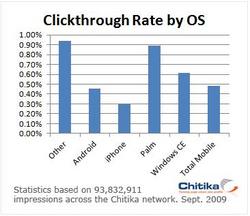Als ich meine Vision des Personal Web Managers geschrieben habe, dachte ich, es wird sicherlich bald eine solche Dienstleistung des Reputation Coaches für aufstrebende Manager oder stark im Web aktive Persönlichkeiten geben. Derzeit ist interessant zu beobachten, wie sich dieser Plattform-Markt für persönliches Reputation Management in Position bringt.
Es steht eben viel auf dem Spiel: die Bewerbung einer Karriere, die für Nachhaltigkeit einer authentischen und erfolgreichen Persönlichkeit steht. Die Online Reputation wird dabei immer wichtiger für den nächsten Karriereschritt, aber ihr Management bleibt leider trotz unterstützender Plattformen zeitaufwendig. Ein kleiner Überblick…
Bisher galt der amerikanische Dienstleister Reputation Defender als der weltweite ‘Platzhirsch’ im Entfernen oder ‘Geradebiegen’ von bildlich belegbaren Fehltritten oder voreilig getroffenen Statements und Kommentaren, die im Web verewigt sind. Denn, wie wir alle inzwischen wissen sollten: Das Web vergißt nichts – teilweise nur, wenn wir entsprechend nachhelfen. Und so bietet Reputation Defender mit myChild ein Produkt an, das den Ruf und die Privatsphäre des Kindes schon von Kindesbeinen an online schützt.
In Deutschland ist mit my ON-ID eine sehr interessante Plattform am Start, die Online Reputation auf technischer Basis zu handeln, monitoren und optimieren anbietet. Die Web 2.0 Plattform offeriert sehr viele Optionen, das eigene Personal Brand als Visitenkarte (bzw. fast schon im Format eines Online CV aufzubauen (mit zahlreichen Schnittstellen und Widgetfunktionen zu anderen Social Networks).
 Am Wochenende erhielt ich nun die neuste Pressemitteilung von Dein Guter Ruf, die mir von meinem Ex-Kollegen Jannis Moutafis zugespielt wurde. Die Nachricht preist die ab sofort kostenlose Suche des (mir noch völlig unbekannten) Reputations-Dienstsleisters an, sowie die Option eine Web-Imageseite zu veröffentlichen. Als Gadget wird der Test „Welcher Online-Typ bin ich“ angeboten, der einem Tips zum persönlichen Reputation Management offeriert (mein Testergebnis siehe Bild).
Am Wochenende erhielt ich nun die neuste Pressemitteilung von Dein Guter Ruf, die mir von meinem Ex-Kollegen Jannis Moutafis zugespielt wurde. Die Nachricht preist die ab sofort kostenlose Suche des (mir noch völlig unbekannten) Reputations-Dienstsleisters an, sowie die Option eine Web-Imageseite zu veröffentlichen. Als Gadget wird der Test „Welcher Online-Typ bin ich“ angeboten, der einem Tips zum persönlichen Reputation Management offeriert (mein Testergebnis siehe Bild).
Hintergrund des Tests: Der Profil Organiser wird hiermit promotet. Dort kann man seine Netzwerk-Profile eingeben und hat diese so im Schnellüberblick und -zugriff. Der vordergründige Vorteil der Übersichtlichkeit, läßt sich mit einem grundlegenden Tip entkräften…
Starte kein Profil in einem sozialen Netzwerk, wo Du nur einen kleinen Mehrwert siehst und evaluiere vorher, ob Du nur aus einer zeitweiligen Zugehörigkeit (Schule, Uni, etc.) oder aus zukünftiger Überlegung (Kontakte halten, Karrierebenefit, etc.) dieses nutzen wirst.
Die Dienstleistungen von Dein Guter Ruf erinnern mich dennoch stark an den Personal Web Manager, denn hier geht es offensichtlich wirklich um den strategischen Ansatz des Reputation Managements mit persönlicher PR-Betreuung. Man bietet vier verschiedene Versionen an: Basis-, Profi-, Premium- und VIP-Manager – von kostenlos bis 129,90 EUR pro Monat. Letztere verspricht sogar…
– Wir legen für Sie Profile in mit Ihnen abgestimmten Portalen an.
– Wir integrieren bereits vorhandene Inhalte in Foren, Blogs, Fachportalen.
– Wir prüfen monatlich Ihre Reputation und liefern für Sie geeignete Portal- und Themenvorschläge.
– Wir führen für Sie geeignete Online-PR Aktivitäten durch.
Insofern wirken die Preise vernünftig und erinnern an das Preismodell von Reputation Defender.
Kurztest: Dein Guter Ruf
 Suche: Die Suche ist unbefriedigend. Bei 466.000 Googletreffern zu meinem Namen fand Dein Guter Ruf rund 70. Einige hatten überhaupt nichts mit mir zu tun. Zahlreiche positive, wie Interviews und Gastbeiträge von/mit mir, wurden gar nicht gefunden.
Suche: Die Suche ist unbefriedigend. Bei 466.000 Googletreffern zu meinem Namen fand Dein Guter Ruf rund 70. Einige hatten überhaupt nichts mit mir zu tun. Zahlreiche positive, wie Interviews und Gastbeiträge von/mit mir, wurden gar nicht gefunden.
Image-Webseite: Ein Bild kann nicht gefunden, hochgeladen oder integriert werden (vielleicht in einer Bezahlversion?!). Der erste Eindruck eines Menschen zählt – und der Mensch verkauft sich in der Karrierebewerbung über ein persönliches Bild. Man verschickt ja auch keinen Lebenslauf ohne Foto.
Paid Services: Daß man für zahlreiche Funktionen (z.B. Kommentar eines Suchtreffers) im Web 2.0 Zeitlater bezahlen muß, ist irgendwie Web 1.0 Welt. Zumal my ON-ID hier schon diese Funktion ohne Aufpreis anbietet.
Fazit. Unspektakulär, nüchtern, sachlich, nicht personalisierbar – aber vielleicht ist die Form genau das, was zukünftig für das Personalwesen die nachhaltige Bewerbung ist. Wer weiß…
Spot On!
Neben my ON-ID macht sich mit Dein Guter Ruf ein weiterer Anbieter auf, unsere individuelle Online Reputation im Auge zu behalten und zu professionalisieren. Mein Urteil bleibt dennoch kritisch. Die Idee Reputation Management mit persönlicher PR-Strategie zu verknüpfen, gefällt mir gut (schon wegen seiner Nähe zu ‘meinem’ Personal Web Manager). Man müsste es fast einmal einem Test unterziehen, um zu sehen, wie erfolgreich sich die Arbeit für das Personal Branding zeigt (Erfahrungsberichte bitte an mich schicken). my ON-ID ist dennoch derzeit einen ganzen Schritt voraus und bietet die spannendere und zielgenauere Lösung das Online Reputation in der Spur zu halten. Reputation Management bleibt weiterhin aufwendig, vor allem zeitaufwendig, denn am besten wird sie derzeit noch von jedem Einzelnen kritisch beäugt, bewacht und bewertet.
 Although web 2.0 provides all the benfit for e-learning, the use is till low. The study “Benchmarking Online Operations: Snapshots of an Emerging Industry” by the consulting company Eduventures shows that the education they offer is still based on “rudimentary, text-based technology”. This stands in contrast to webinars, web-conference or any kind of podcast or vidcast tools that the web 2.0 world offers today. “But when it came to technology, the Eduventures survey found that the widely used tools are e-mail, text discussions that don’t happen in real time, physical textbooks, and word and PDF documents”, reports http://chronicle.com/blogPost/Online-Programs-Profits-Are/8517/?sid=wc&utm_source=wc&utm_medium=en.
Although web 2.0 provides all the benfit for e-learning, the use is till low. The study “Benchmarking Online Operations: Snapshots of an Emerging Industry” by the consulting company Eduventures shows that the education they offer is still based on “rudimentary, text-based technology”. This stands in contrast to webinars, web-conference or any kind of podcast or vidcast tools that the web 2.0 world offers today. “But when it came to technology, the Eduventures survey found that the widely used tools are e-mail, text discussions that don’t happen in real time, physical textbooks, and word and PDF documents”, reports http://chronicle.com/blogPost/Online-Programs-Profits-Are/8517/?sid=wc&utm_source=wc&utm_medium=en.
 Talking about new trends on the social web, marketers always love the point of view when brands are involved. They love to negotiate, as I call it, on the “cost per engagement (cpe)” level. Businesses and their communication suppliers always try to get customers engaged in brands. Some years ago, this was difficult. Now, it seems easy. And this topic becomes even more relevant for future marketing strategies when you think about today’s engagement economy.
Talking about new trends on the social web, marketers always love the point of view when brands are involved. They love to negotiate, as I call it, on the “cost per engagement (cpe)” level. Businesses and their communication suppliers always try to get customers engaged in brands. Some years ago, this was difficult. Now, it seems easy. And this topic becomes even more relevant for future marketing strategies when you think about today’s engagement economy. In my view, a major part of the explanation to this phenomenon lies in the evolutionary process of the engagement economy and their brand commitment when people even want to become
In my view, a major part of the explanation to this phenomenon lies in the evolutionary process of the engagement economy and their brand commitment when people even want to become  Facing the pure intention of social media versus advertising, we have to admit that we are talking about an antithesis – no matter if you can book advertising on a social networks or not. Social Media is conversations while advertising is the monologue from company to customer. And in between lies some undefined (or shall we say unqualified) customer dialogue that we have been through for years of online advertising.
Facing the pure intention of social media versus advertising, we have to admit that we are talking about an antithesis – no matter if you can book advertising on a social networks or not. Social Media is conversations while advertising is the monologue from company to customer. And in between lies some undefined (or shall we say unqualified) customer dialogue that we have been through for years of online advertising.
 In our times of social networking, there is an experience that I make which is in some way amusing. In some way it is quite difficult to understand why people do what they do.
In our times of social networking, there is an experience that I make which is in some way amusing. In some way it is quite difficult to understand why people do what they do.


 Don’t we love to play this game with kids because we know how happy it makes them… Pick-a-boo. But as adults using social networks: What is it that makes us happy? Some weeks ago, I asked some friends of mine who in turn asked friends of theirs as well as their colleagues: What is the main benefitial feature of social networks? The most frequent answer that came up was the ‘Who has been on your profile lately’ feature which goes along the lines of ‘The Pick-a-boo’ effect.
Don’t we love to play this game with kids because we know how happy it makes them… Pick-a-boo. But as adults using social networks: What is it that makes us happy? Some weeks ago, I asked some friends of mine who in turn asked friends of theirs as well as their colleagues: What is the main benefitial feature of social networks? The most frequent answer that came up was the ‘Who has been on your profile lately’ feature which goes along the lines of ‘The Pick-a-boo’ effect.


